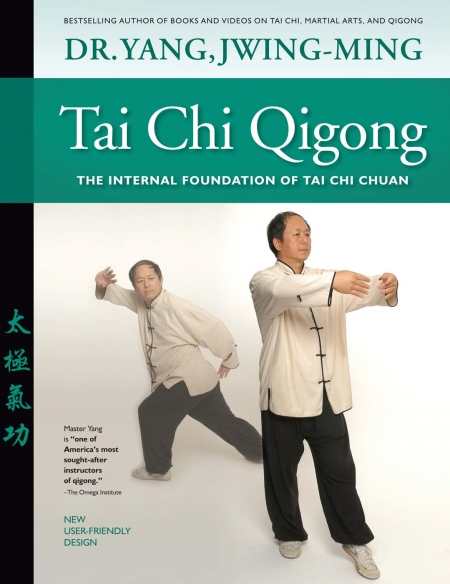Tai Chi Qigong 2nd ed. rev.
The Internal Foundation of Tai Chi Chuan
- 2013 INDIES Finalist
- Finalist, Body, Mind & Spirit (Adult Nonfiction)
Discussion of abstract tai chi concepts helps develop a deeper understanding of the philosophy behind the practice.
Yang, Jwing-Ming has written more than thirty-five books on martial arts, the latest an informative overview of the history and movements of tai chi in a second revised edition of Tai Chi Qigong: The Internal Foundation of Tai Chi Chuan.
Having opened fifty-five schools in eighteen countries, Yang has a long history of practicing and teaching tai chi that dates back to 1961. His interest in and knowledge of the subject is evident in the early chapters, which detail the history and philosophy of the concepts.
Chapter 1 establishes how the tai chi movements emerged and why they are applied. A review of qigong (the study of the energy of the universe) includes a discussion of medical qigong used for healing purposes, religious qigong for enlightenment, and martial qigong used for fighting, as well as the theories behind how martial qigong is used to increase muscle power and efficiency. Chapter 2 explains the concepts of yin (the negative) and (the positive), the root of Taijiquan, and how the two forces need to be in balance.
The goal of the book is to learn the concepts somewhat independently, guided by the author, but these early chapters include complex concepts that are difficult to grasp. Yang, Jwing-Ming acknowledges this when describing how to apply yin and yang concepts to qigong, saying, “Many people, even some qigong practitioners, are still confused by this.”
The limitations of the book format add to the challenges, but Yang, Jwing-Ming does his best to work within its constraints. He presents well-written, clear, and concise descriptions of the history of tai chi and the movements involved in the practice. In the descriptions, Chinese terms are used, such as qi (universal energy), jiagi gate (referring to a cavity in the spine), and lower dan tian (areas of the body that store qi). Definitions of these and many other terms are also included in the glossary at the end of the book, but they are abstract concepts and remain obscure when applied to specific techniques.
In Chapter 3, many photographs serve as examples to help illustrate the movements. However, this chapter is the most difficult to follow, primarily because the book format is not the ideal mode for explaining tai chi concepts, especially for beginners. Tai chi is dependent on a smooth, constant, fluid movement from one position to another, and still photographs are unable to fully convey this flow of movement. The photographs include solid-lined arrows and dotted-lined arrows that loop in various directions, tracing the movement, but the explanations remain unclear. It is difficult to accurately interpret the movements through the book alone, though a companion DVD is available.
This instructive book will appeal to those who want to develop a deeper understanding of the philosophy behind tai chi movements, as well as those who already have a working knowledge of tai chi and can decipher the tai chi movements depicted in the still photographs.
Reviewed by
Maria Siano
Disclosure: This article is not an endorsement, but a review. The publisher of this book provided free copies of the book and paid a small fee to have their book reviewed by a professional reviewer. Foreword Reviews and Clarion Reviews make no guarantee that the publisher will receive a positive review. Foreword Magazine, Inc. is disclosing this in accordance with the Federal Trade Commission’s 16 CFR, Part 255.

